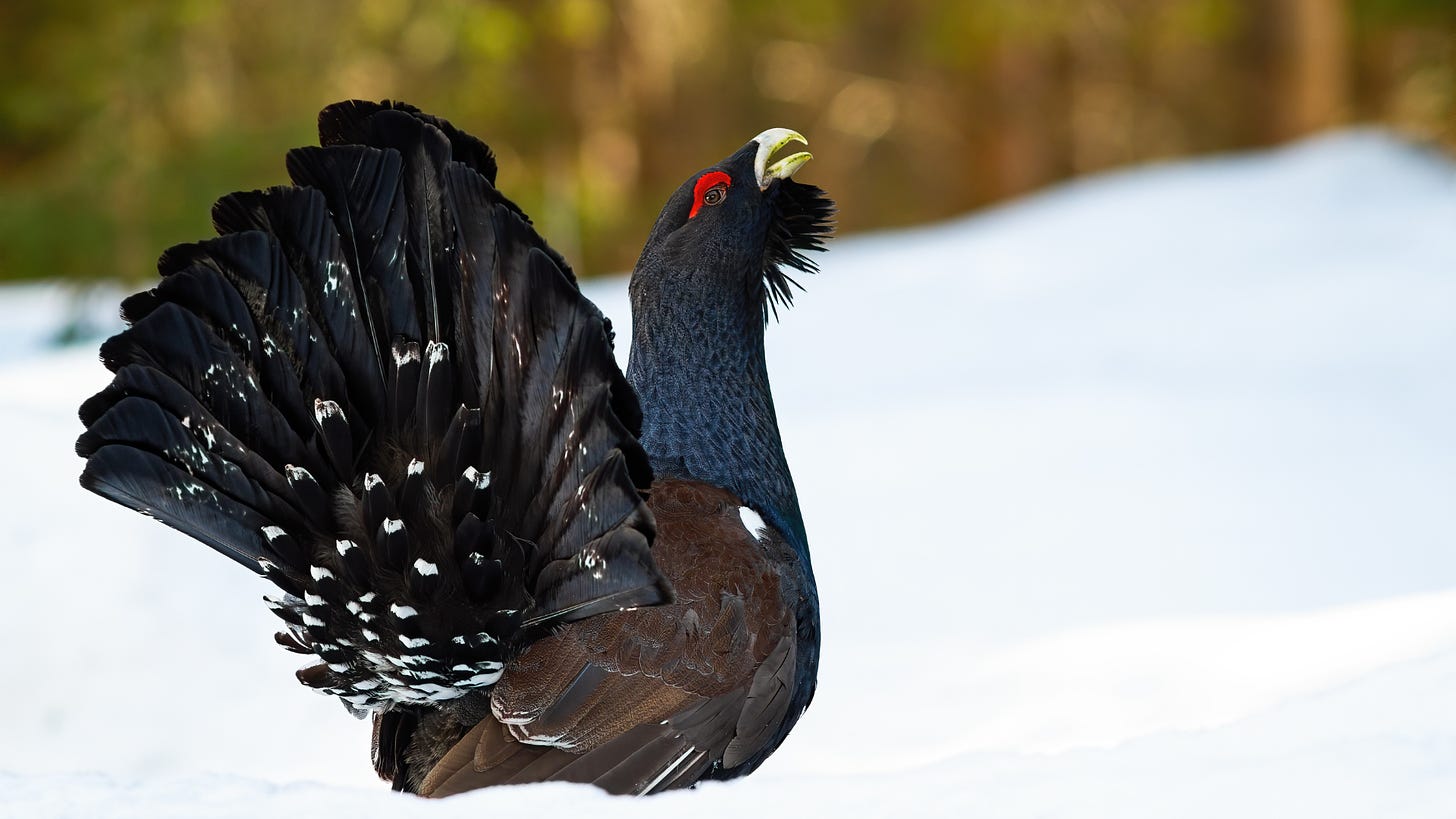The Scottish Pinewoods, Highlands. Dawn breaks upon the great, Caledonian Forest. The pleasant, morning light cracks through the trees, making the snow beneath glisten in the light. A slight tread is heard on the forest floor. Suddenly a flutter of wings, and a mysterious sound like a popped cork. It is a male Capercaillie displaying to its potential other half for the year. Although this sight is an iconic one for the Caledonian Forest, it hasn’t been for a long time.
The last wood grouse (Western Capercaillie) was seen in the year 1785, by foresters. Little did they know that they had been the cause of the extermination of the entire species in the UK. Pine needles are a major part of their diet, and that gone, they couldn’t survive let alone thrive in Scotland. 50 years after that, they would make a great comeback.
Nobody had confirmed the extinction of the species until a visit from the famed abolitionist and founding chairman of the RSPCA, Thomas Fowell Exton. He was on a shooting trip to Lord Breadalbane at his Perthshire residence, Taymouth Castle. Buxton, being an amateur naturalist, had noticed the lack of the once common wood grouse of the pines. A few years previously, his cousin, Lelwyn Lloyd, who had spent most of his life fishing in Scandinavia, had given Buxton a pair of Capercaillie from the Swedish pine forests. Buxton had released them in a wood near Cromer, which had made these birds the first in the UK for half a century, and the first two birds in England since 1600s. Though the Cromer Capercaillies were thought to be an admirable reintroduction project, the hen bird had died in the heat. Thomas Fowell Buxton had observed Breadalbane’s land during his stay and had considered the Taymouth Estate more suitable for the species, so, he sent his gamekeeper to Sweden. In 1837, the latter returned, with, according to the Dundee Courier, ‘twenty-eight species of the cock of the wood species collected throughout Sweden.’ The release was successful, and Buxton’s gamekeeper returned to his master in Norfolk, with an extra £5, which, in today’s money, is the equivalent of approximately, £640. The Scottish ‘laird’ was extremely happy with the ‘wood grouse,’ and wrote to Thomas Fowell Buxton stating that he had no idea how to repay his kindness, for Breadalbane viewed it as a gift.
There are now 542 birds in the UK, still a fraction of what used to roam not only Scotland but England as well. They are on the Red List of Conservation, for a rapid decline has been experienced, and the RSPB currently advises no one to try and find them, lest someone spooks them. The population is still fragile, but, with the help and efforts of conservationists in league with private landowners and the Scottish Government, the Capercaillie is attempting to make a comeback, and a scheme has been put in place to reverse the dramatic decline.
Remember to subscribe!




